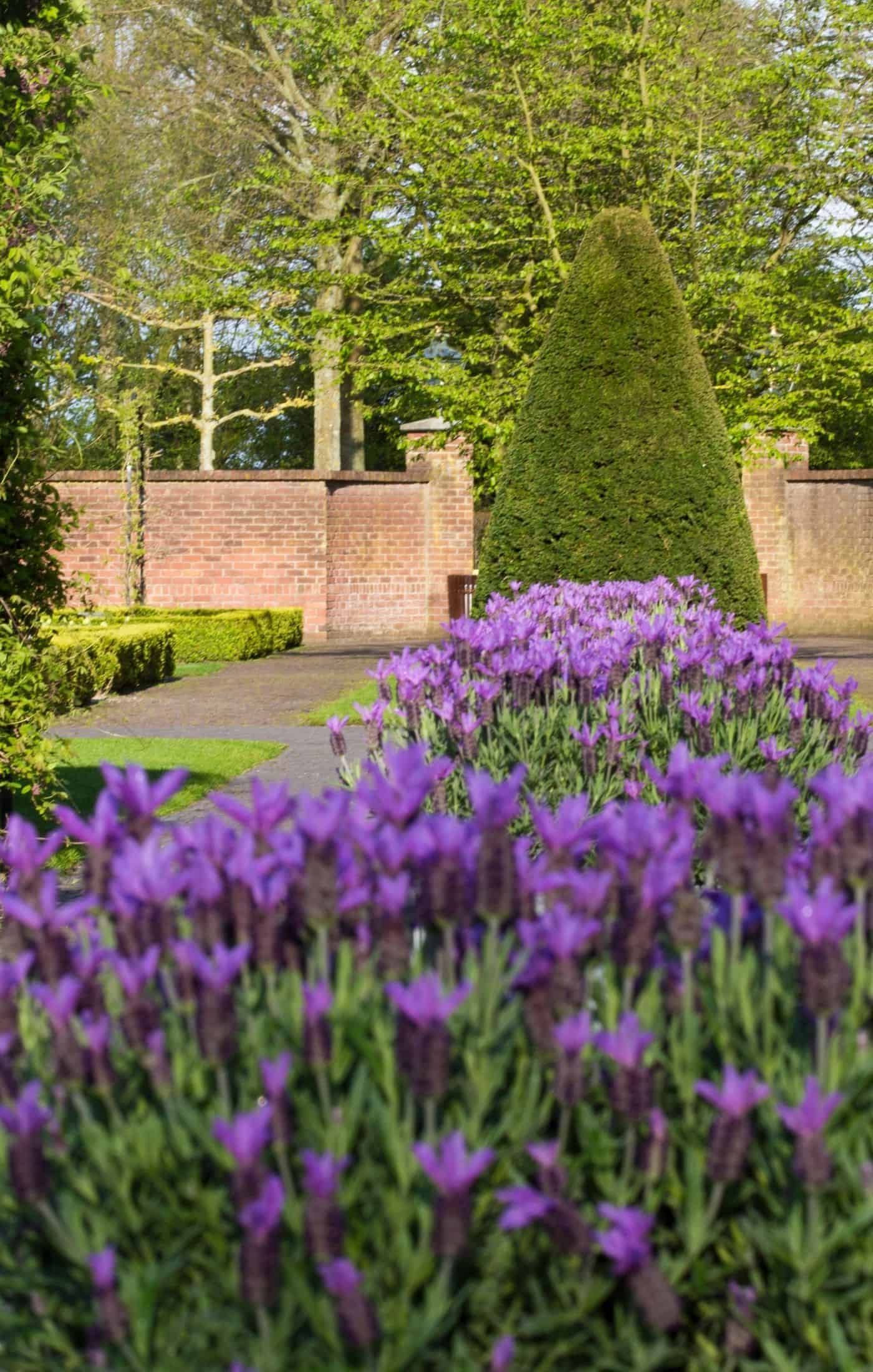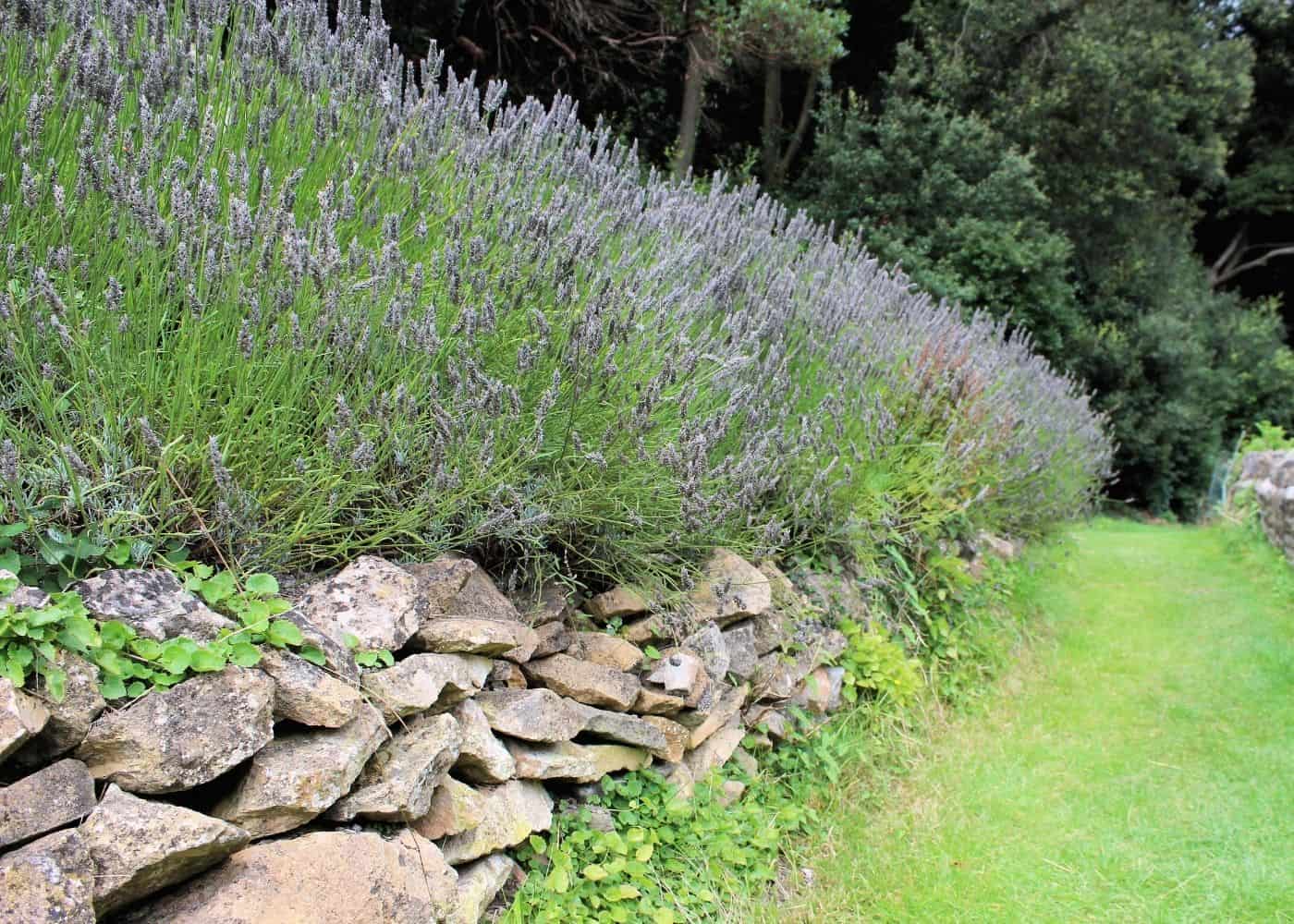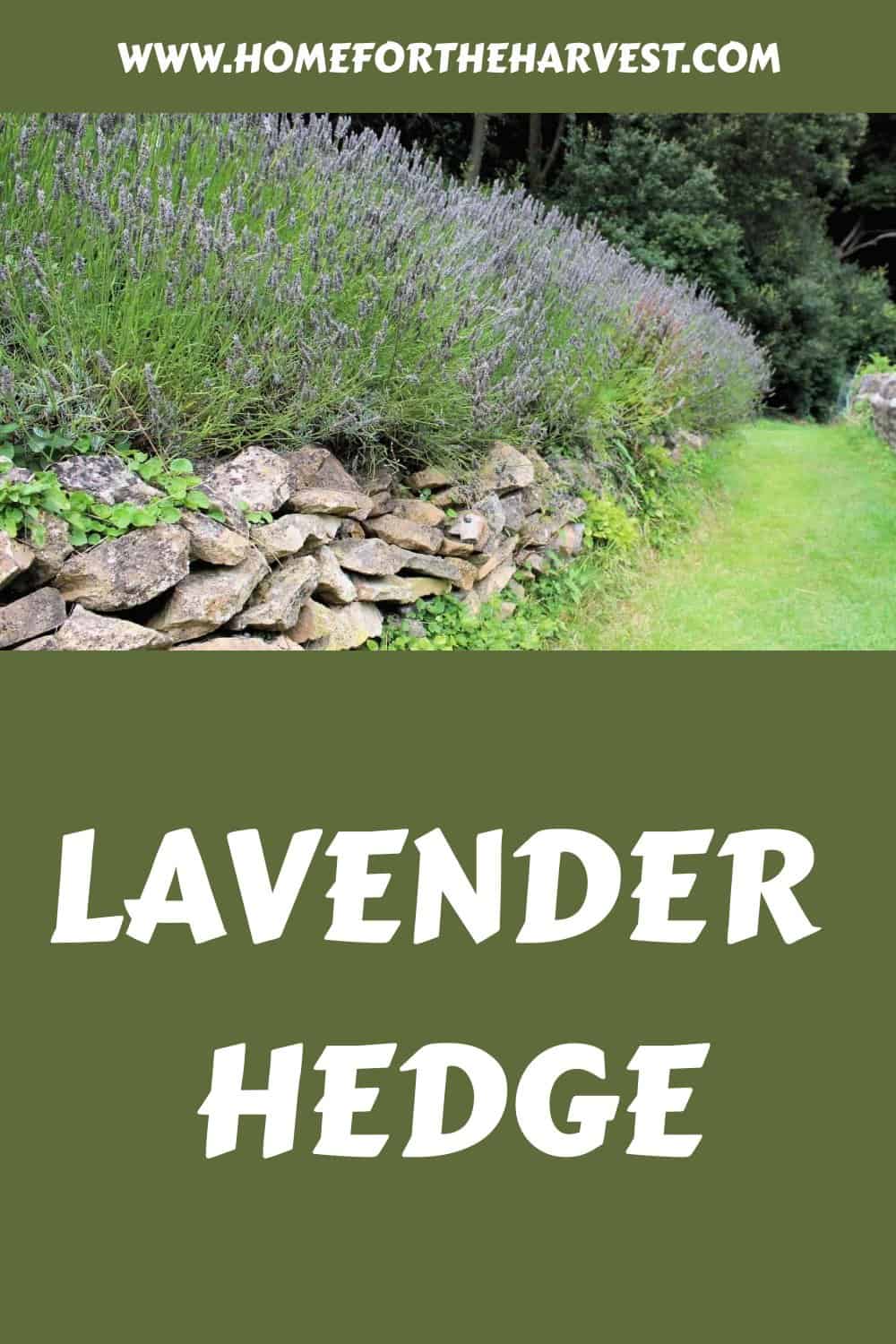A lavender hedge is a row of closely spaced lavender plants that grow together to form a low hedge line. Lavender hedges can be created with many different types of lavender, with some varieties better suited to formal trimmed hedges and other types better for informal free-form hedges. Care consists of regular watering plus seasonal pruning and mulching.
Lavender hedge basics
Lavender hedges are low maintenance, easy to grow, and add a vibrant fragrance to your garden. They are also highly versatile and do well in many hardiness zones. Lavender plants are generally extremely drought-resistant due to their Mediterranean origin.
Not only are lavender hedges visually appealing, but they are also valuable for your garden. For instance, lavender hedges can act as a windbreak, which prevents the soil in your garden from breaking down and destroying your other plants. Lavender hedges also attract bees and other pollinators to your garden. Lastly, the scent can help repel deer and other pest animals from your garden.
How to plant a lavender hedge
To plant a lavender hedge, start by choosing a planting location with full sun, well-drained soil, and adequate access to water. Lavender plants need full sun to thrive. Growing them as a hedge requires vigorous plants that knit together as they grow, so look for a location with at least 6-8 hours of sunlight per day.
Lavender thrives in well-draining soil, meaning soil that drains out excess water easily. Do not plant a lavender hedge in an area with heavy clay soil where water ponds unless you plan to amend the soil with sand/perlite/pumice to increase drainage and add air pockets for the roots of the plants. Lavender is prone to root rot, and a single dead plant from root rot can ruin the appearance of the hedge.
Lastly, the hedge will likely need to be watered every week or two in most climates (and perhaps more frequently at first and/or during a dry spell). These plants require infrequent deep watering. Choose a location where you can water the plants deeply a few times a month while also letting the soil dry out between waterings.
When to plant a lavender hedge
Lavender hedges are best planted in the early fall or early spring. Temperatures are mild during these shoulder seasons, and the plants are less likely to be exposed to extreme temperatures before they root into the surrounding soil. Fall planting is especially helpful as the soil is already warm. Spring planting is great because there tend to be more varieties available locally, and the ground is just starting to come alive with a burst of nutrients.
How far apart to plant lavender for a hedge
Space the lavender plants 12″ to 15″ apart. Spacing them this far apart allows the plants to expand until they reach their full width within a year.
Best USDA hardiness zones for growing lavender
Most popular lavenders grow best in USDA Hardiness Zones 5-9. This includes most English lavenders and hybrid lavandins. Since lavender is a Mediterranean plant, it grows best in hot but not humid climates with plenty of sunlight.
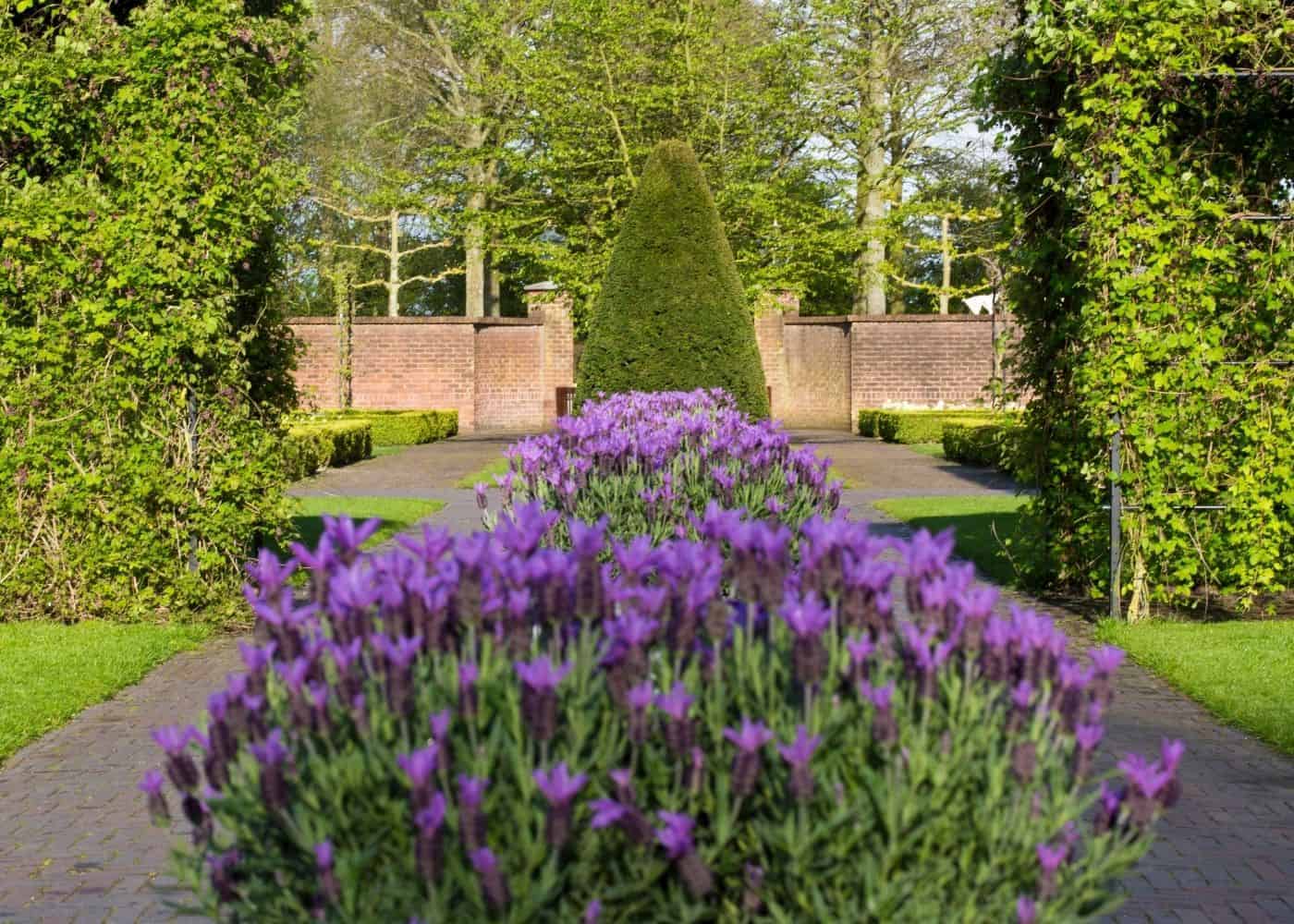
Best lavender varieties for hedges
Lavender hedges can be created with many different varieties of lavender falling into four different general types of lavender. All the lavender plants in your hedge should be of one single variety (unless you’re going for an informal look). And look for plants that have been propagated vegetatively (like from cuttings) rather than from seed, as seed-grown plants can show quite a bit of variation, whereas a whole hedge made from plants cut from the same mother plant will usually look very uniform.
English lavender (Lavandula angustifolia)
The first type of lavender for planting a hedge is English lavender – Lavandula angustifolia. This type of lavender is the most common and produces high-quality lavender oil. For best results, plant in mass plantings, low hedges, or along walkways to brighten up your space. Here are some appropriate English lavender varieties for hedges:
- Hidcote Lavender
- Munstead Lavender
- Lodden Blue Lavender
- Melissa Lavender
English Lavender gets its name from its natural adaptability to cooler climates. This type of lavender thrives in England and can withstand harsher conditions, making it the perfect plant for hardiness zones 5-8. This English lavender can reach 2-3 feet in height at full maturity. English Lavender is known for its striking colors and strong lavender scent, making it the perfect addition to your garden.
Lavandin (Lavendula x intermedia)
The second type of lavender for planting a hedge is Lavendula x intermedia, a hybrid lavender known as Lavandin. This type of lavender is less hardy than others but produces a lovely fragrance. If you’re looking for a taller lavender hedge, this type of lavender will work best for you. Here are some excellent Lavandin varieties for hedges:
- Grosso Lavender
- Grappenhall Lavender
- Hidcote White/Alba Lavandin
- Grey Hedge Lavender
- Margaret Lavandin
- Lullingstone Castle Lavender
This highly fragrant lavender hybrid is a combination of both English Lavender and Portuguese Lavender. This type of lavender does best in hardiness zones 5-11, making it a highly versatile plant. Although not edible, Lavendin is commonly used in potpourri and other floral decorations. Lavendin stands at about 2-3 feet tall with dark violet flowers (although there are white lavender varieties available).
French lavender (Lavandula dentata)
French lavender (Lavandula dentata) is a low-maintenance choice for a lavender hedge. This low-maintenance plant is easy to care for in the garden, flowering from early summer through to the fall.
French lavender is hardy in Zones 8-9 and grows best in climates with wet winters and dry, sunny summers. French Lavender has light purple fringed flowers with a robust rosemary-like scent. This type of lavender can reach 36 inches or more.
Spanish lavender
Spanish lavender (Lavandula stoechas) is an ornamental lavender used for hedges that feature exceptional flowers. This type is known for its flower blooms topped with elegant bracts that resemble “rabbit ears.”
Spanish lavender grows well in warm climates with hot, dry summers in hardiness zones 8-11. These hedging plants tend to stand at 18 to 24 inches tall.
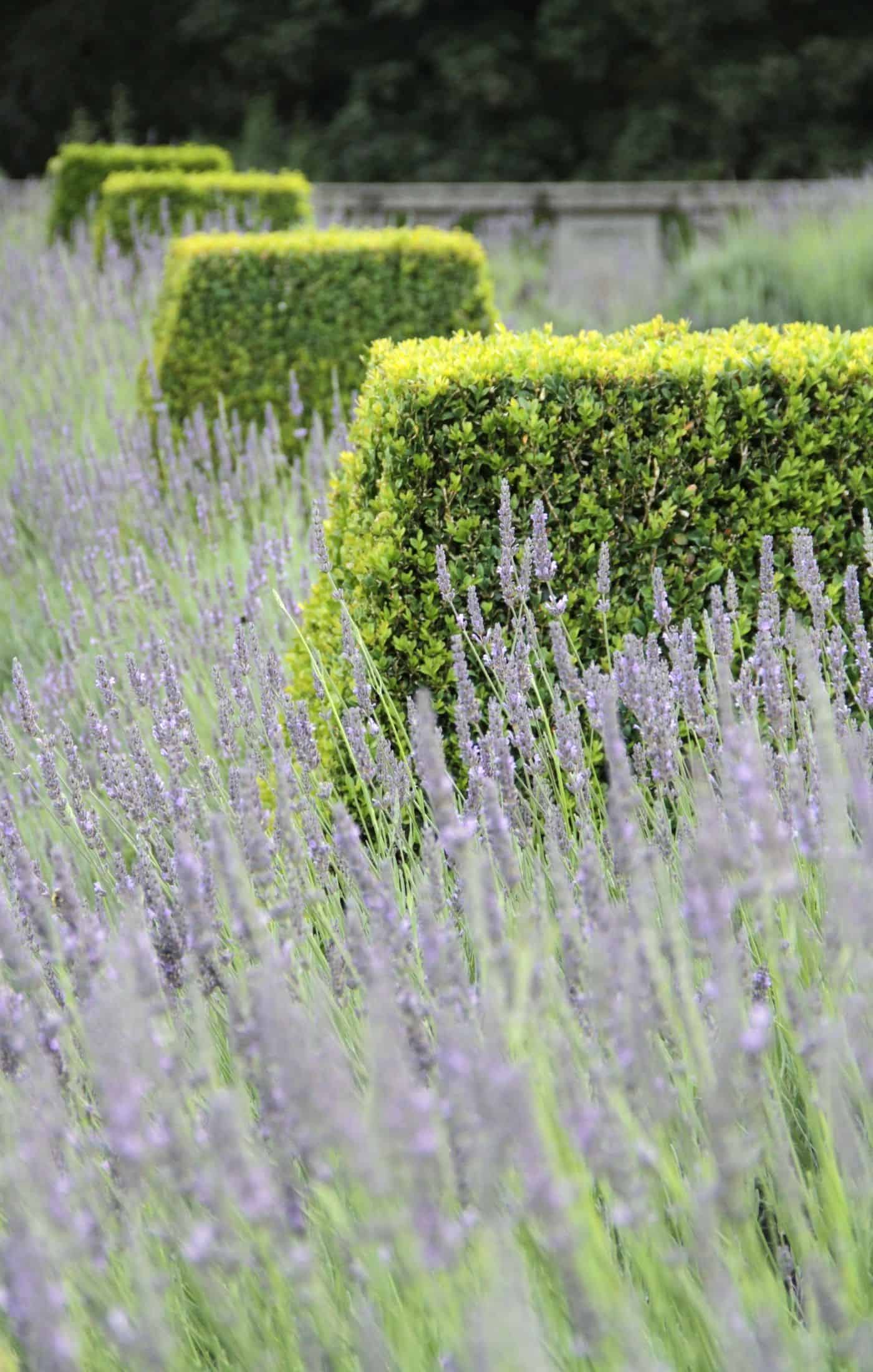
Plant care tips for hedge-planted lavender
Like rosemary, lavender needs well-draining soil that doesn’t get too wet. Having well-draining ground is crucial during the winter months, as the cold mixed with the damp soil can cause lavender to die. You also want to pack your soil with rocks and sand to allow drainage. Although you typically use moisture-holding mulches for certain plants, lavender does better with gravel or stone, especially in humid climates.
When planting lavender, another thing to watch out for is the soil’s acidity. If your soil is too acidic, it will eat up your lavender. So, you need to check the pH of the soil before planting your lavender to ensure the ground doesn’t damage the plant.
Lastly, make sure you do not overwater your lavender hedge, as this can cause root rot—only water your lavender hedge when the soil feels dry, or the hedge is looking sad.
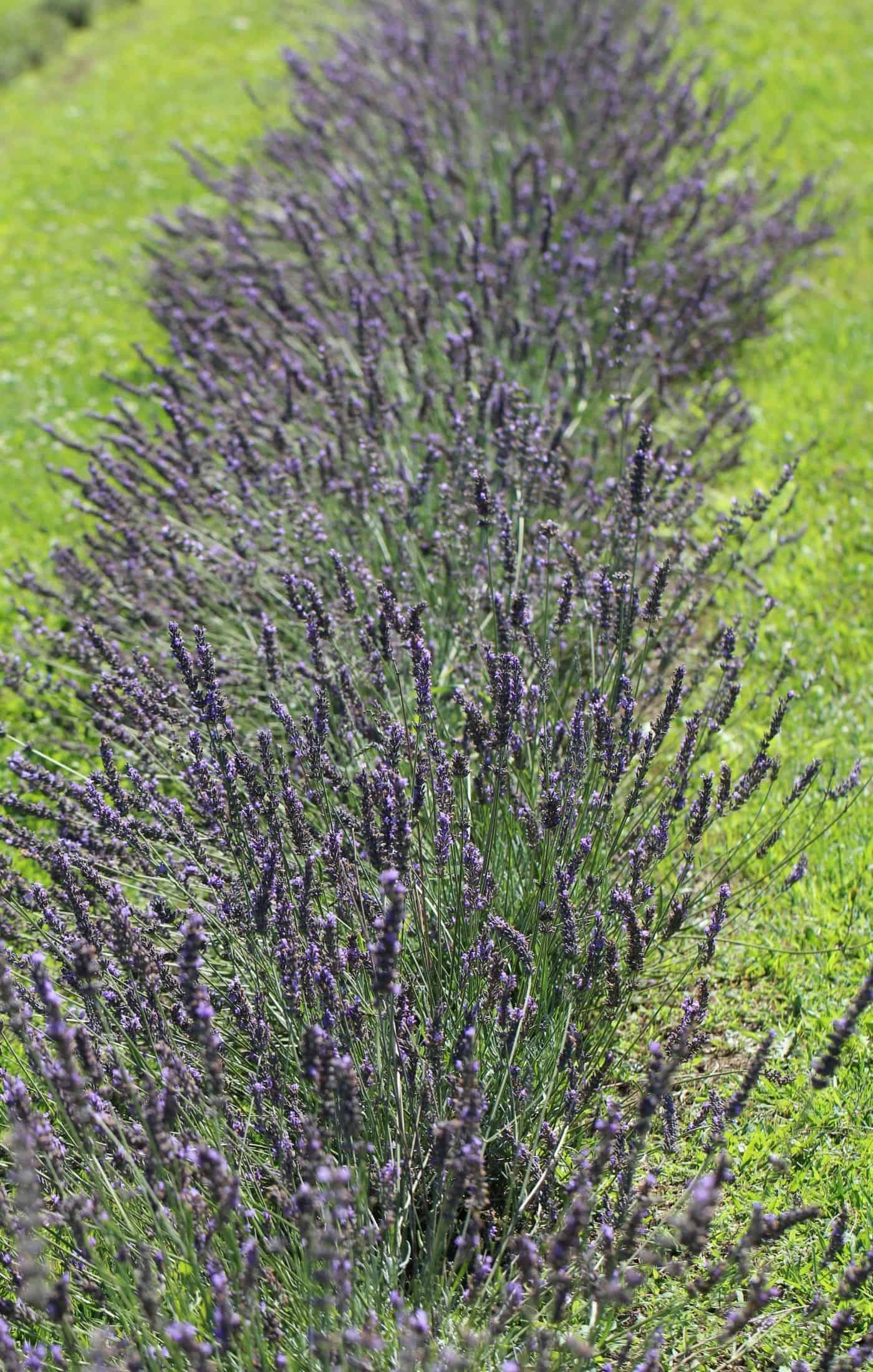
Pruning lavender hedges
Although not necessary, pruning a lavender hedge can help it maintain its shape. However, if you do not prune your lavender hedge, it can form a hole in the middle with the stems sprawled out. Cut back your lavender stems 1/3 to 1/2 its height, making sure not to cut into the woody base, which can damage the plant.
To ensure your lavender hedge doesn’t bloom too early, prune in the summer so the hedge will bloom the following season.
